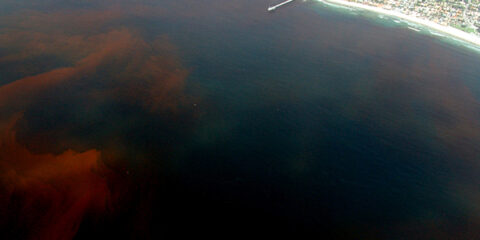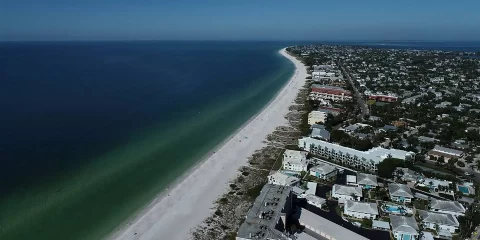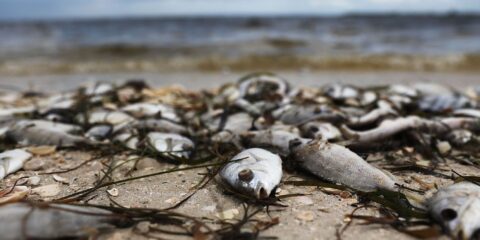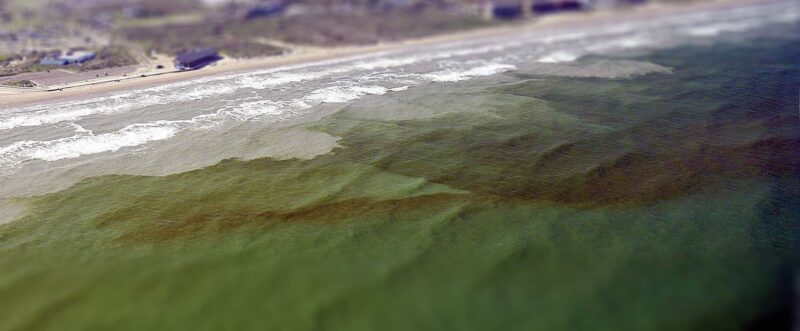What You Should Know About Red Tide in Florida
Florida’s beaches and vibrant marine ecosystems have long been a magnet for tourists and nature enthusiasts. However, a recurring phenomenon known as “Red Tide” can seriously limit your beach experience and leave you with a disappointing impression of the state’s true coastal beauty. Let’s talk about its causes, effects on the environment and human health, as well as the ongoing efforts to manage and mitigate its impact.
Here are some things to consider before planning your next Florida trip.
Understanding Red Tide
Red Tide, scientifically known as harmful algal blooms (HABs), is a natural phenomenon caused by the rapid proliferation of certain microscopic algae in seawater. These algal species, such as Karenia brevis, produce toxins that can be harmful to marine life and humans.
Multiple factors contribute to the formation of Red Tide. Nutrient pollution, primarily from agricultural runoff and urban development, leads to excessive nutrient concentrations in the water, providing a fertile breeding ground for these harmful algae. Additionally, factors like warm water temperatures and specific oceanic circulation patterns play crucial roles in the initiation and intensification of Red Tide events.
Ecological and Environmental Effects
Red Tide in Florida has profound ecological consequences, resulting in fish kills, marine mammal strandings, and disruptions to fragile marine ecosystems. Fisheries, a cornerstone of Florida’s economy, can suffer devastating losses during these blooms, leading to economic downturns in coastal communities. Ecosystem imbalances caused by Red Tide can have long-lasting effects on the biodiversity and overall health of marine environments.




Human Health Concerns
The toxins produced by Red Tide algae can become airborne and lead to respiratory problems in humans, especially for those with preexisting conditions. Additionally, the consumption of contaminated shellfish can cause serious illnesses, including neurotoxic shellfish poisoning and paralytic shellfish poisoning.
Managing the Affects of Red Tide in Florida
Advancements in technology have improved the monitoring and detection of Red Tide events. Satellite imaging, buoy networks, and community-based citizen science initiatives provide real-time data that helps scientists track the movement and intensity of blooms.
Efforts to manage and mitigate Red Tide include nutrient management to reduce pollution inputs, artificial upwelling to bring nutrient-depleted waters to the surface, and bio-manipulation techniques to introduce natural predators of the harmful algae. Public awareness campaigns and educational initiatives also play a crucial role in reducing human activities that contribute to Red Tide in Florida.
The Future Red Tide in Florida
Several regions in the state have successfully managed Red Tide through a combination of strategies. Case studies highlight how collaborative efforts between scientists, policymakers, and communities have led to reduced bloom impacts and faster recovery of affected ecosystems.
When is Red Tide in Florida?
Red Tide events in Florida can occur at various times throughout the year, but they are typically more common during the warmer months. The peak season for Red Tide in Florida tends to be from late summer to early fall, typically from August to November. During this period, the combination of warm water temperatures, increased nutrient runoff, and favorable oceanic conditions can lead to the rapid growth and proliferation of harmful algal blooms.
It’s important to note that while the peak season is generally from August to November, Red Tide events can occur outside of this timeframe as well, and their occurrence can vary from year to year. Factors such as weather patterns, ocean currents, and nutrient levels in the water all contribute to the timing and intensity of Red Tide events.
If you are planning a visit to Florida’s coastal areas, especially during the peak Red Tide season, it’s a good idea to stay informed about current conditions. Local authorities, environmental agencies, and news sources often provide updates on the status of Red Tide and any associated health advisories. The Florida Fish and Wildlife Conservation Commission tracks the current Red Tide status on their Red Tide Current Status page of their website and they’ve got a helpful interactive map as well.